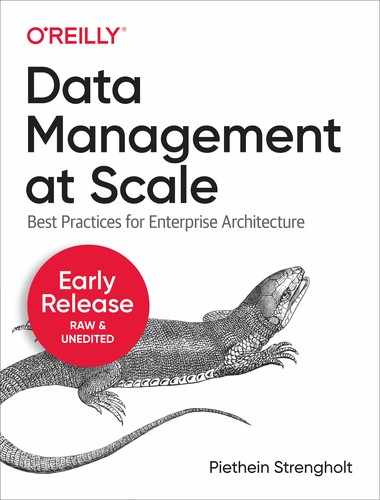Book Description
The amount of data generated is growing tremendously in size and complexity. As trends in data management and integration, such as cloud, API management, microservices, open data, software as a service (SaaS), and new software delivery models, continue to evolve rapidly, data warehouses and data lakes are no longer scalable.
With this practical book, you’ll learn how to migrate your enterprise from a complex and tightly coupled data landscape to a new data management architecture that’s more flexible, distributed, and scalable. Ready for the modern world of data consumption, this architecture can be introduced incrementally without a large up-front investment. Author Piethein Strengholt provides blueprints, principles, observations, best practices, and patterns to get you up to speed.
In three parts, this book helps you:
